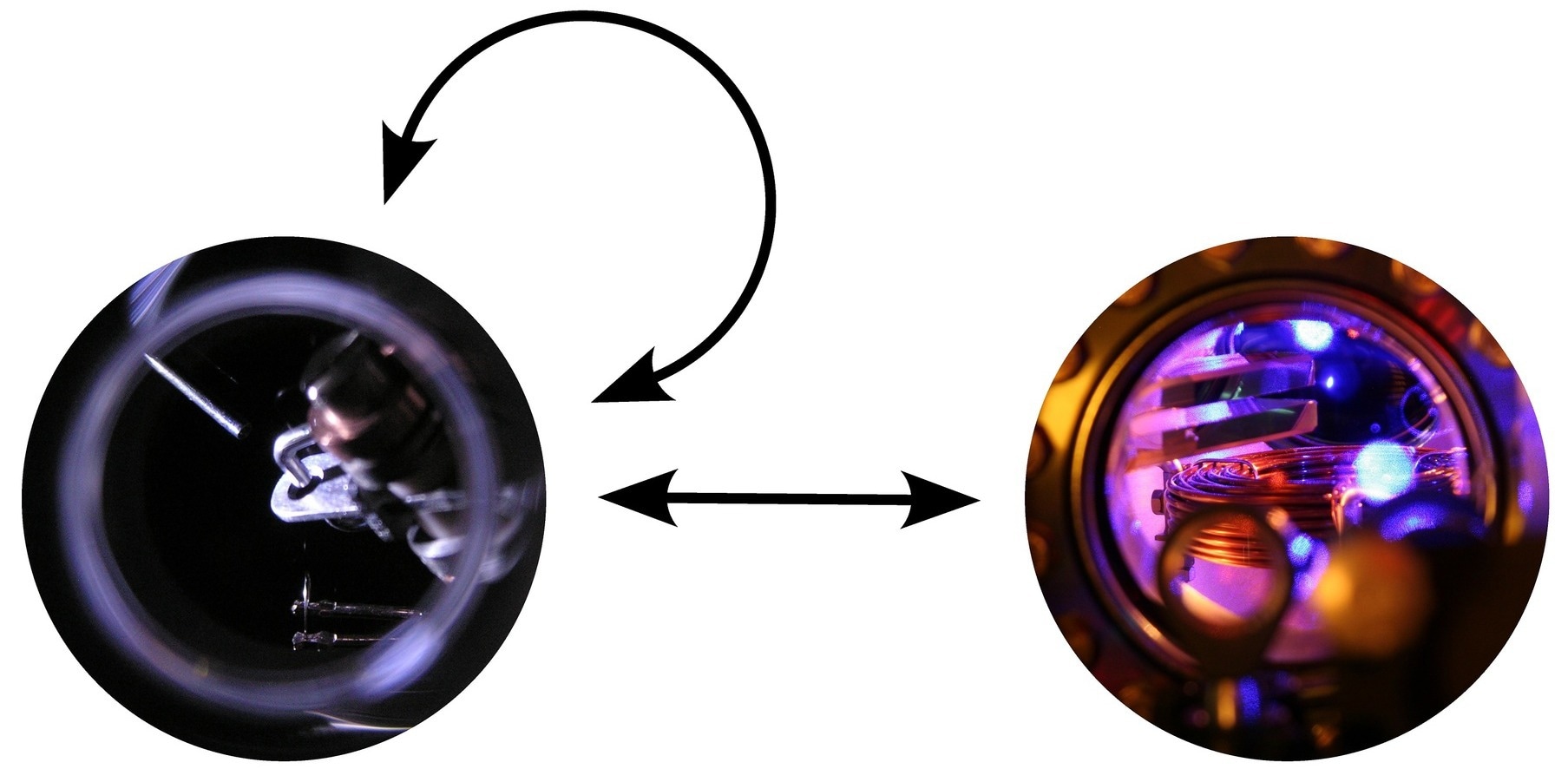Researchers have questioned whether it is possible for dark matter to interact with photons and impact the atomic structure. Two different kinds of optical atomic clocks were made at the Physikalisch-Technische Bundesanstalt (PTB) inside the scope of the Collaborative Research Center DQ-mat and the Cluster of Excellence QuantumFrontiers.

For the search for dark matter, three atomic clocks were compared: Two clocks used a single ion stored in an ion trap (left) and the third atomic clock uses approximately 1000 neutral atoms in an optical lattice (right). Image Credit: Physikalisch-Technische Bundesanstalt.
It is the most precise search for the interaction of ultralight dark matter with photons so far. The present detection limits for a possible coupling have been enhanced over an order of magnitude via this work—over an extensive range of dark matter particle mass.
While no proof of a dark matter coupling has been discovered, the work is a step closer to comprehending the nature and possible interactions of dark matter. The examination outcomes have been published in the current issue of the journal Physical Review Letters.
The astronomic observations denote the presence of alleged “dark matter”—which makes up over 80% of all matter and interacts with ordinary visible matter only through gravity. No proof for the interaction with photons (the elementary particles of which light is also made) has been established—hence the term “dark” for this type of matter. The composition of dark matter and whether interactions are occurring with traditional matter are yet to be discovered.
A specifically hopeful theoretical method implies that dark matter could comprise particles that are extremely light and act more like waves compared to individual particles: alleged “ultralight” dark matter. As far as this case is concerned, earlier undiscovered, weak interactions of dark matter with photons would result in minuscule oscillations of the fine-structure constant.
The fine-structure constant is known to be the natural constant that explains the strength of the electromagnetic interaction. It identifies the atomic energy scales and impacts the transition frequencies utilized as references in atomic clocks. Since various changes are sensitive to possible changes of the constant to varying degrees, it is possible to use comparisons of atomic clocks to search for ultralight dark matter.
For this reason, scientists at PTB have utilized an atomic clock that is especially sensitive to possible alterations of the fine-structure constant in such a search.
For this intention, this sensitive atomic clock was made to compare with two other atomic clocks with lower sensitivities in months-long measurements. The consecutive measurement data were analyzed for oscillations, known as the signature of ultralight dark matter.
As no considerable oscillations were discovered, the dark matter remained “dark,” even under fine examination. Detection of the puzzling dark matter was hence not achieved. The lack of a signal enabled the identification of new experimental upper limits on the strength of a possible coupling of ultralight matter to photons. Earlier limits were enhanced by over one order of magnitude over a wide range.
Simultaneously, the scientists also studied if the fine-structure constant may get altered over time—for instance, by gradually increasing or decreasing. Such a change was not detected in the data. In this context, present limits were also tightened, denoting that the constant remained even over long periods of time.
In opposition to earlier clock comparisons, where every atomic clock needed its experimental system, two of the three atomic clocks were identified in a single experimental setup in this work. For this reason, two different transition frequencies of a single trapped ion were utilized: The ion was interrogated in an alternative manner on both optical transitions.
This is a significant step towards making optical frequency comparisons even smaller and stronger—for instance, for a future search for dark matter in space.
Journal Reference:
Filzinger, M., et al. (2023) Improved Limits on the Coupling of Ultralight Bosonic Dark Matter to Photons from Optical Atomic Clock Comparisons. Physical Review Letters. doi.org/10.1103/PhysRevLett.130.253001.